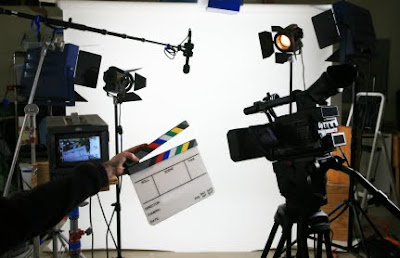
The comparison between the Preliminary task and the Opening sequence of a thriller which we just did are very far apart. The first and most obvious difference to us was the planning involved in the process. The preliminary task took us week to plan. It was the third week of term and we were only just starting to settle in as a group, so the planning was fundamental to achieve any success. Luckily, we had most of this done for us though. The teachers planned most of the fundamental things such as the location, the date, the props and the equipment. All we were let to do was to sort out two actors and to storyboard the 20 second sequence. Not a hard task. However the planning for the horror sequence was a very different story. For this we were in charge of everything. As the producer of the film, I was in charge of most of the organisation and planning of the group. The main part of our planning was that we had to do a production folder, including things such as lighting plans, set plans, location ideas, equipment lists, cast lists, costume and makeup lists and also storyboards. If we didn’t have any of these things it would have made the process very difficult. Once we had got all of these sorted out we then had to do a time plan. This was vital as we only had one day to get all of our things sorted out. Only once all of this was done were we ready to shoot.
The camera work used in the Prelim task was very basic. We had very little experience using cameras and so we tended to stick to the more basic shots such as wide shots, mid shots close-ups and occasionally an over the shoulder shot. We would rely mainly on the dialogue from the script to make the movie, rather than experimenting with different camera shots to create an effect for the audience. However this is the total opposite for our opening sequence. We decided to use no dialogue so all of the tension needed to come out of the camera work. We decided that we weren’t going to be so obvious and decided to do a one shot piece, so we needed to plan out the set and the camera movement out very carefully. We were going to do a two minute tracking shot tracking from one side of the set to another, passing through all of the important powerful images on the way through. This took a whole morning to set up as we had to prepare everything to be perfect if it was going to work. In the end it was very much like we had imagined as it was fairly similar to the working storyboard be one shot across the room.
I think that the use of sound has developed the most in-between the Preliminary task and the Horror sequence. In the preliminary task we kept the sound as simple as we possibly could. We just filmed the scene with the camera and used the camera to pick up the dialogue in the scene. When it came to editing the piece we made no changes to the sound. However in the thriller sequence the sound was one of the most important aspects of the sequence, as we didn’t have any dialogue and the shot was only one shot. We filmed all of the sequence and then once we were happy with what we had we decided to try and pick up as many sounds that we possibly could using a boom. We too sounds of all of the obvious sounds in the scene such as the door, footsteps and the chair. We then sourced all of our sounds in the editing stage and once these had been sorted out we decided to add some music to create the tension of the piece. We collected all of our sounds from Sound Cut Pro and added them to the piece and made it so all of the sounds built up to certain moments of tension. We also faded in the sounds and faded out the sounds at some points to create a slick feeling.
One of the main areas that I personally managed to improve in the most was the editing aspect. I spent lots of time working out the sound of the piece and the credits of the piece. These are both done in the Final Cut Pro section. We started of the sequence with the credits, following the
This first shot of the Preliminary task shows how basic our skills were. We used a very standard mise-en-scene with no lighting effects except from some overhead white lights. We also used very standard, basic shots such as wide shots, and close ups. We very rarely tried anything else and only really stuch to the storyboard instead of experimenting.

However in this screen grab you can see that there is a vast difference with the preliminary task. For example, our lighting was very different. We had a dull dim white light to create a damp atmosphere. We also had a haze machine to create a dusky atmosphere. Lastly our camera movement was very different. For example in this scene we used tracks, where as in the preliminary task all of the shots were still shots. We also varied with our distances so we went from close ups to mid shots to create some variation in the scene.


No comments:
Post a Comment